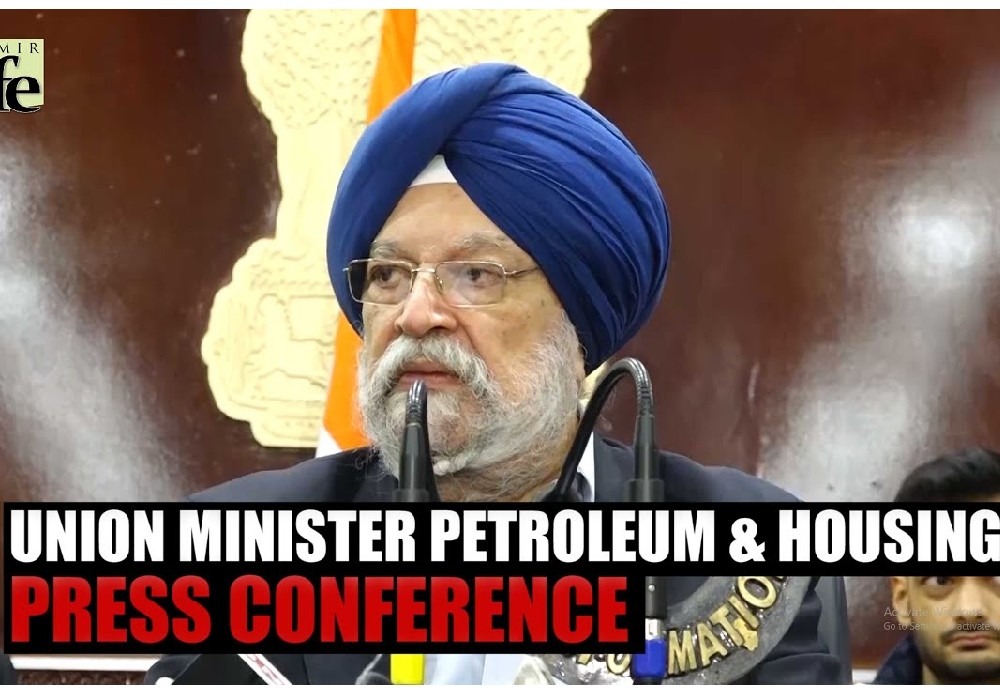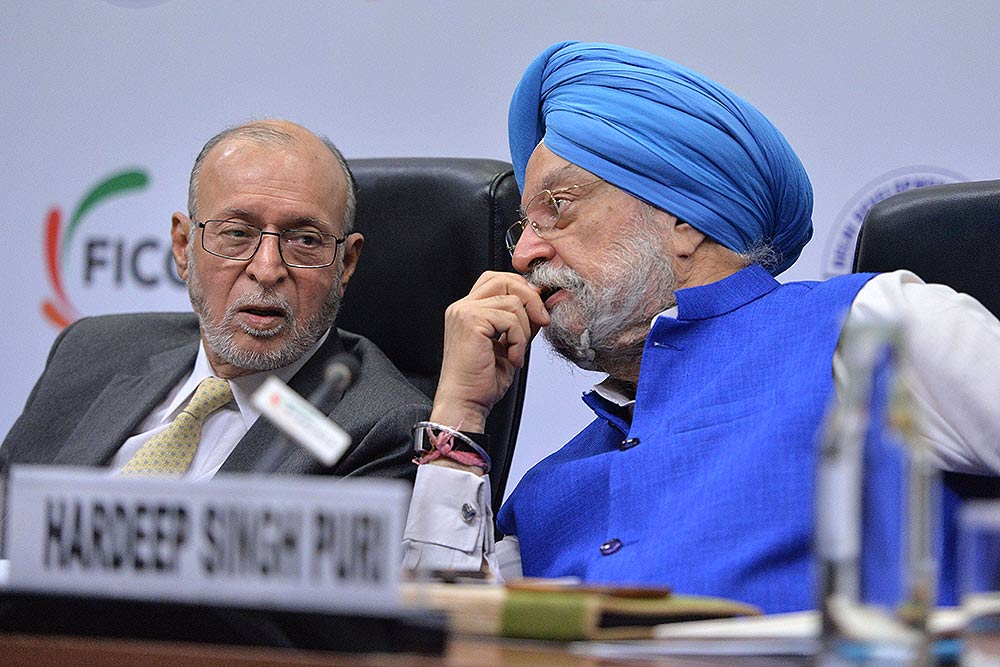India is a fast-growing nation with a population of more than 1.4 billion. This only means there will be ever-increasing energy demand. The hydrocarbon Hydro Power and mining sectors, therefore, are full of opportunities. Before the pandemic, it was estimated that India’s energy demand would increase by about 50% by 2030. But now, after being hit by the pandemic, it is expected to be around 35 %. However, India might double its energy consumption by 2040. India is aiming to become a $5 trillion economy by 2040, and growth in the energy sector would be needed to achieve that goal. The Indian government is trying to step up the contribution of natural gas by 15 % by 2030.
India’s demand for oil is expected to increase 74%, which means 8.7 million barrels per day will be required by 2040. This ever-growing need for energy will make India more dependent on fossil fuel imports for at least for next three decades, as domestic oil and gas production has been stagnant for years. To avoid a huge energy import bill, India aims to become energy independent by 2047.
In a scenario like this, the untapped hydrocarbon resource potential of the northeast region of India can prove to be a boon. The region has a huge hydrocarbon resource potential in the Upper Assam Shelf and Assam-Arakan Fold belt sedimentary basins amounting to 7,600 MMtoe, of which only about 2,000 MMtoe has been discovered so far.
Nearly 13% of the country’s crude oil and 16% of the country’s natural gas production comes from NER. The States of Assam, Tripura and Arunachal Pradesh currently produce 12%, 29% and 6% out of the available total reserves of 6,766 MMToe, 560 MMToe and 43 MMToe respectively. Untapped potentials of 80 MMToe, 113 MMToe, 70 MMToe and 2 MMToe are yet to be explored/produced from the States of Nagaland, Mizoram, Manipur and Meghalaya respectively. The northeast also has an ample amount of Shale oil and gas reserves and a large part of the land has not been surveyed/explored yet.
The Government of India came up with the Hydrocarbon Vision Document 2030 for northeast India in 2016, which rests on five pillars: People, Policy, Partnerships, Projects and Production, and aims to prepare a roadmap for increasing the production of oil and gas in Northeast. It has outlined the necessary investment in the hydrocarbon sector to increase exploration activities.
Shri Hardeep Singh Puri, Minister of Petroleum and Natural Gas announced during the NE Investor’s Meet at Guwahati in September 2021, about the implementation of Oil & Gas projects worth Rs 1 lakh crore in NER by 2025, as GoI plans to establish the NER as the dominant hydrocarbon hub to boost India’s energy economy. Shri Hardeep Singh Puri also announced that a special bidding round will be offered under the OALP regime with additional Incentives for attracting Investments, doubling the exploration acreage in NER from the existing 30,000 sq. Kms to 60,000 sq. Kms and doubling the Oil and Gas production from the current 9 MMTOe to 18 MMTOe by 2025. He also informed about the expansion of the national Urja Ganga Gas grid to the State Capitals of eight northeastern states through the North East Gas Grid (NEGG) to provide access to natural gas to end-user in NER and massive expansion of City Gas Distribution (CGD) network in NER through 11th CGD Bid Round etc.
Hydropower is another potential energy source with a life span of over 50 years prioritised by GoI. “Hydro Power Development policy” was introduced to curtail import bills against scarce fossil fuels. Hydro potential in the country is estimated to be 1,48,700 MW installed capacity and so far, only 15% has been harnessed and 7% is under various stages of development with 78% of the potential remaining without any plan for exploitation.
Northeast, also known as the “Future Power House of India”, has a hydropower potential of 60,000 MW ( > 25 MW) primarily in the states of Sikkim, Arunachal Pradesh and Meghalaya, which is 42.54% of the total capacity of the country, out of which only 3.47% (2027 MW) has been harnessed so far till November 2021. Sikkim is the first state in the region to kickstart the hydroelectricity boom during 2001-02, followed by Arunachal Pradesh and later on Meghalaya, Manipur, Mizoram and Nagaland and others joined the group.
Ministry of Power launched a hydro initiative of 50,000 MW with a major focus on the Northeast and the “Pasighat Proclamation on Power” was adopted at the Northeast Council’s Sectoral Summit on the Power Sector, identifying the region’s “hydropower potential” as a priority area concerning India’s energy security.
Standing Committee on Energy (SCE) presented the “43rd Report on Hydropower” in the Lok Sabha on January 4, 2019, based on which GoI declared hydropower projects with more than 25 MW capacity as sources of “renewable energy”, with a special focus on exploiting the full potential of hydropower in the underexplored regions of Northeast as well as other parts of the country. GoI also introduced two major schemes, viz Renewable Resources Energy (RRE) and System Improvement Schemes (SIS), which have given a boost to the regular availability of power to the remote areas of the NER and also to a large extent in reducing the AT & C losses. NEC also approved Rs.9,865.00 crore to prepare “DPR for comprehensive Scheme for strengthening of transmission and distribution system in NER and Sikkim” implemented by PGCIL and funded by GoI and World Bank. GoI also established North Eastern Electrical Power Corporation Ltd (NEEPCO) at Shillong and has taken up North Eastern Region Power System Improvement Project (NERPSIP) to strengthen Intra – State Transmission and Distribution systems, which will immensely help two surplus Power States in NER- Arunachal Pradesh and Tripura.
Hydropower generation also has many challenges such as arranging finance at cheaper rates, as it requires Rs 10 crore/MW for a hydroelectric Power plant against a requirement of Rs 8 crore/MW for coal-based Power plants. Govt can help in this respect by arranging finance from international agencies through either Power Finance Corporation or Rural Electrification Corporation etc. Proper designing of the dam is another big challenge to absorb the suspected earthquakes, as NER is considered to be one of the six most seismically active regions in the world and from 1953 to 1992, the region experienced 21 earthquakes of more than 6.5 Richter Scale. The majority of the hydro projects in NER are being built on basins that are shared between India and Bangladesh resulting to dispute with Bangladesh on water and river management thus India and Bangladesh have established a “Joint River Commission” to address these issues, especially for projects like- hydroelectric projects on Teesta, some projects on rivers in Tripura, or the proposed Tipaimukh dam Churachandrapur (Manipur) etc. Land Acquisition and Proper impact assessment of the ecology are the other vital components affecting the execution of hydro projects in NER.
In 2019, there were only 18 hydropower projects above the capacity of 25 MW under construction across the Northeast. Of these, 10 are suffering from time overrun due to various challenges and some of the delayed projects are – Sikkim [Teesta Stage-VI (500 MW), Rangit IV HE Project (120 MW), Rangit-II (66 MW), Bhasme (51 MW), Rongnichu (96 MW), Panan (300 MW)], Arunachal Pradesh: [Pare (110 MW), Gongri (144 MW)], Assam & AP: Subansiri Lower (2000 MW)]
Northeast is also blessed with an unrealised potential of 65,837 MW from renewable energy sources like Solar, Small Hydro and Bio-energy. Small hydro potential in NER is estimated at 3,261.49 MW with major potential in Arunachal Pradesh, Sikkim, Meghalaya and Assam and Bioenergy total potential of 276 MW with major potential in Assam. The total Solar potential in NER is 62,300 MW, with major potential in Assam, Manipur and Mizoram. The wind power potential of 300 to 500 MW at low hub heights of 50 and 80 metres remains untapped in the region in the States of Arunachal Pradesh, Assam, Manipur & Meghalaya.
Northeast India is a storehouse of Mineral Resources with reserves of Rs 10 lakh crore as per a report of the Geological Survey of India (GSI), which are presently either underutilized, unutilized, or mismanaged. In alignment with the ‘Act East Policy, GSI has taken up 108 projects in NER on different mineral commodities during the last five years and 23 mineral exploration projects are under execution during the current financial year 2022-23
NER has 1,738 million tonnes of coal reserves mainly in the States of Meghalaya, Assam and Arunachal Pradesh and there is abundant potential for the development of coal-based industries apart from the use in power generation. Coals can be used to make coke for steel mills, graphite industries etc. Assam coal has a low ash level and high sulphur content, making it ideal for fertiliser production.
As per GIS, the Region has a Limestone reserve of 10,108.6 million spreading from Meghalaya to the southern part of Assam, a low-grade Dolomite deposit in Arunachal Pradesh with a 58 million tonnes estimated reserve in Dedza and 185 million tonnes probable reserve in Rupa area, Graphite with an estimated reserve of 703.015 million tonnes in Arunachal Pradesh, China Clay with a probable reserve of 1 to 3 million tonnes in Mizoram and Tripura and Meghalaya has a total reserve of 5.88 million tonnes of bauxite. Following Jharkhand and Andhra Pradesh, Meghalaya has the 3rd largest uranium deposits in NER and Iron ore is also available in Assam with an estimated reserve of 14.84 million tonnes. Other various minerals available in the region are- Sillimanite, Kaolin, Fuller’s earth, Feldspar (used as a source of alkalis and alumina in glazes), Quartz, feldspar, Micas, Pyroxenes, Amphiboles etc. Sikkim Mining Corporation started mining Copper, Zinc, and Lead concentrates presently in small quantities and may magnify its scale in near future. Exploration of these untapped resources in a sustainable manner may change the industrial landscape dramatically for the entire NER.
Assam’s natural gas contains a lot of petrochemical components- LIDPE, HDPE, Ethylene, Butadiene, Propylene, and other polymers can be stripped and broken down into individual components, what BCPL is doing in the region- As many as 3,000 polymer-based units with a processing capacity of 100 MTPA can be set up in the small and medium scale as downstream industry to BCPL. It will be a good substitute for jute and wood-based materials in the Tea industry, which is worth Rs.54 billion business at present. It has a potential market in Bangladesh, Burma, and Nepal, which are all nearby.
While working for development, we also need to mitigate adequately the rich biodiversity of the region considering the impacts from massive flaring of natural gas during Oil & Gas E&P activities, Mineral mining, particularly coal mining in Assam, uranium mining in Meghalaya, and limestone mining in Meghalaya has been linked to massive deforestation, air pollution, and water pollution and a majority of rivers and other water systems have been affected by toxic discharge from Chromium and Limestone mining.

देश में एक करोड़ यात्री प्रतिदिन कर रहे हैं मेट्रो की सवारी: पुरी ..

Union Minister for Petroleum and Natural Gas and Housing and Urban Affairs, Hardeep Singh Puri addressing a press conference in ..

Joint Press Conference by Shri Hardeep Singh Puri & Dr Sudhanshu Trivedi at BJP HQ| LIVE | ISM MEDIA ..
(3).jpg)
"I wish a speedy recovery to former Prime Minister Dr Manmohan Singh Ji. God grant him good health," Puri wrote. ..